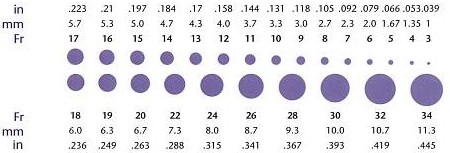
Visit our American website for American pricing and products shipped directly from American warehouses.
A urinary catheter is any tube system placed in the body to drain and collect urine from the bladder. Your health care provider may recommend a catheter for short-term or long-term use because you have or had:
Catheters come in many sizes, materials (latex, silicone, teflon), and types (foley, straight, coude tip). In general, the smallest possible catheter is preferred. Some people may need larger catheters to control urine leakage around the catheter or if the urine is thick and bloody or contains large amounts of sediment.
There are three main types of catheters:
Intermittent catheterization is a method whereby a catheter is inserted into the bladder when it is full and then removed immediately after the bladder is drained. The number of times that someone is required to catheterize throughout a day may vary from person to person and will depend on the level of fluid intake. It is suggested that catheterization is necessary every 4 to 6 hours. In order for someone to catheterize themselves independently, they require a certain level of hand function and finger dexterity.
An indwelling urinary catheter is one that is left in place in the bladder. Indwelling catheters may be needed for only a short time, or for a long time. These catheters attach to a drainage bag to collect urine. A newer type of catheter has a valve that can be opened to allow urine to flow out, when needed. An indwelling catheter may be inserted into the bladder in two ways:
An indwelling catheter has a small balloon inflated on the end of it. This prevents the catheter from sliding out of the body. When it's necessary to remove the catheter, the balloon is deflated.
There is no tube placed inside the penis. Instead, a condom-like device is placed over the penis. A tube leads from this device to a drainage bag. The external catheter should be changed daily.
Indwelling and external catheters require the use of a drainage bag. There are two types:
The French Scale is commonly used to measure the diameter of the catheter. As the scale below illustrates, 1 Fr = .33mm; therefore, in order to determine the diameter of a catheter in mm, simply divide the Fr by 3. For example: 12 Fr / 3 = 4 mm.

Complications of catheter use include:
Contact your health care provider if you develop or notice any of the following:
References:
Moy ML, Wein AJ. Additional therapies for storage and emptyhing failure. In: Wein AJ, ed. Campbell-Walsh Urology. 9th ed. Philadelphia, Pa: Sauders Elsevier; 2007: chap 70.
Wierbicky J, Nesathurai S. Spinal cord injury (thoracic). In: Frontera WR, Silver JK, Rizzo Jr TD, eds. Essentials of Physical Medicine and Rehabilitation. 2nd ed. Philadelphia, Pa: Saunders Elsevier; 2008: chap 147.